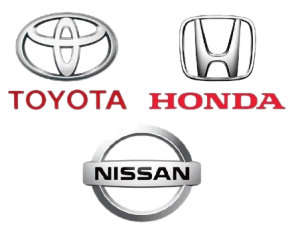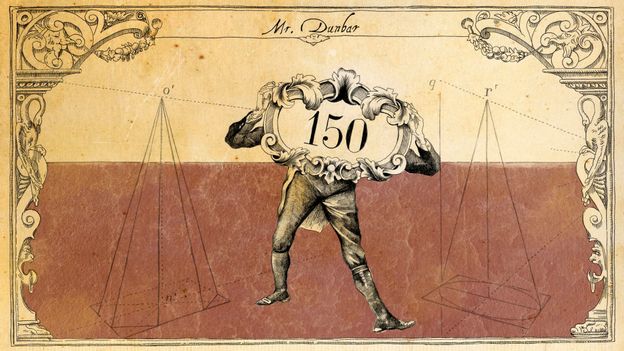Genghis Khan conquered all of Eurasia, a population exceeding 100 million, with fewer than 100,000 soldiers. His core capability arguably lay in the unanticipated speed of his approach. However, a ‘media war’ that instilled fear in his enemies also played a significant role. Battles where enemies were consumed by fear, leading to their self-destruction or surrender, were a factor in the rapid conquest of the world by the Mongols. The greatest weapon used by Genghis Khan’s army was terror. He employed a strategy that instilled such fear in his opponents that they wouldn’t even dare to resist.
‘Commanders, elders, and common people, hear this. Know that God has given me all the empires of the earth from east to west. Those who obey shall live, but those who resist shall die along with their wives, children, and servants.’
This message was sent by Genghis Khan to the inhabitants of Nishapur, a commercial city in today’s Iran. Faced with this, Genghis Khan’s enemies had only two choices: to resist and be annihilated or to surrender and live as if nothing happened. Nishapur eventually surrendered without a fight.

Of course, for such a tactic of fear to work, it requires building a corresponding reputation. However, there must be a strategy that effectively highlights this fact in people’s perception. While the Mongols did indeed devastate many conquered areas, they also used visual tactics to enhance the effect, such as building ‘towers of skulls’ in the middle of conquered cities, displaying the severed heads of the fallen, thus instilling the image of the Mongol army as ‘demons of Tartar’ in their enemies.
The true battlefield is people’s perception:
In 2008, Hyundai and Kia Motors had market shares of 3.2% and 2.2%, respectively, in the U.S. auto market, totaling 5.4%. Considering the U.S. market as the battleground for the global auto industry, this was a significant achievement for these latecomers. In contrast, Japan’s Toyota held 16.8% of the market, and Honda had 11%. Automobiles are evaluated in the market based on quality attributes like price, performance, safety, and design. But is that really all?

Quality is important, but what precedes it is people’s perception. If quality were so crucial, Toyota and Honda’s sales figures would be similar in Japan. However, Toyota captures nearly half of the Japanese market at 46.8%, whereas Honda only has 13.8%. In Japan, Honda is known primarily as a motorcycle manufacturer.

https://global.honda/en/Cub/history/stories/special-edition/
Changing this perception among people is not easy. An example from the corporate world is when Compaq Computers, a global personal computer company’s subsidiary in Korea, placed an advertisement in major national newspapers on March 18, 1998, saying, ‘If there’s a setting IBM, there’s a rising Compaq.’ Mentioning IBM directly in its ads led to a legal dispute with Korean IBM, seemingly concluding Compaq’s bold advertising strategy. However, they later continued with ads hinting at the comparison controversy with the tagline, ‘We may have lost, but don’t give up. Better computers are born out of competition.’ Why would Compaq engage in such risky advertising despite moral criticisms and legal sanctions?
It’s because the perception that ‘IBM means computers’ was so entrenched among people. Even if Compaq produced higher quality and cheaper computers, they had no choice but to draw attention through provocative comparative advertising to shift people’s perceptions. Marketing is fundamentally everything a company does in the market, and specifically, it involves the 4Ps: Product, Price, Place, and Promotion. A marketing strategy is about how these 4Ps are mixed. There are several basic principles to consider when mixing these 4Ps, and although scholars propose various marketing principles and laws, they can essentially be summarized by the keyword ‘differentiation.’
There are various areas of differentiation, such as innovation through product differentiation and market differentiation through market segmentation. However, ultimately, these too are subject to the overarching principle that differentiation must occur in people’s perceptions. Marketing competition is essentially warfare, and this battlefield is within the customer’s perception. Otherwise, there would be no reason for companies to focus so intensely on advertising. If not for the war of perception, they would devote more effort and time to producing better and cheaper products.

Our human memory is still superior to the PC sitting in front of us. If we only consider memory capacity, our memory is about 100 terabytes (TB). That’s the equivalent of over 20 million books or about 100,000 videos. If we consider ‘tera’ as trillion, and each video is about 1 gigabyte or one billion bytes, then we are talking about 100 trillion bytes in total. Although our thinking speed is relatively slow, it is about 10 megahertz, which is 1/200th the speed of today’s PCs which operate at about 2 gigahertz.
The problem is our short-term memory capacity. The issue becomes serious when it comes to human short-term memory. It wouldn’t be an exaggeration to say that most problems stem from our limited short-term memory capacity. Computers have something called RAM (Random Access Memory), which serves the function of temporarily remembering necessary information. For a computer to perform any task, information needs to be loaded into RAM. No matter how good a computer is, its ability to perform tasks at any given moment is limited to the information currently in RAM. Therefore, if there are many tasks, they must be divided.
While a computer’s hard disk can store a lot of data, only the data loaded into RAM is actually used for operations. The information read is now in RAM, where it is used for processing. Computer short-term memory is improving, typically between 8 to 16 gigabytes. Humans also need to retrieve stored information and load it into short-term memory when needed. For us, short-term memory is akin to a computer’s RAM.
We constantly need to process information received from our eyes, nose, ears, mouth, and other sensory organs. Just looking around from where we are, you can realize the enormous amount of objects and sounds entering our eyes and ears. If we had to process all the information from our senses, wouldn’t our brains be incredibly burdened? We selectively extract information that is meaningful to us and pay attention to it, sending only what is deemed necessary to long-term memory for storage. This is the role of the hippocampus. Conversely, when we need to think about something, we need to retrieve the necessary information from long-term memory into short-term memory. Whatever we are currently thinking about is all in short-term memory.
The issue is that human short-term memory capacity is quite poor. Depending on the individual, if we quantify human short-term memory, it involves about 7 plus or minus 2 chunks of information. If someone is considered a genius, they might remember up to 9 chunks at once. Inside our computer CPUs, there are small units called registers. This is where information stored in RAM is temporarily held for computation. Computers use their short-term memory more efficiently. If we consider one item’s memory capacity as a 16-bit register, our short-term memory corresponds to about 7 of these 16-bit registers. Since 8 bits equals one byte, our short-term memory capacity is about 14 bytes. When you think about a computer’s RAM being around 8 gigabytes, our short-term memory capacity is relatively modest.
We find it difficult to remember more than 7 chunks of information at a time. Most people can easily recall phone numbers with seven or eight digits, but numbers longer than that are harder to remember at once. The capacity of memory that humans can think of at one time is about 7 plus or minus two. Remembering 7 items at once is a stretch requiring effort. Typically, ordinary people easily come up with about three chunks of thoughts at a time.
Let’s say you’re planning to buy a new TV. Would most people consider every brand on the market? Not necessarily, as many studies suggest that people typically think of about three brands first: Samsung, LG, and maybe a foreign brand. This is how purchasing decisions are actually made for all products.
If all consumers act this way, it eventually means that one or two giants dominate each market, and the rest must differentiate or move to new markets. With the law of diminishing returns and network effects, coupled with the way people perceive, the world becoming more equal would be strange and artificial. Thus, companies must enter the top three in human memory to survive unless a ‘small giant’ with exceptional capabilities emerges.
The same applies to sports and entertainment stars. Even if you’re not a fan, you remember a few celebrities. It’s not just three celebrities; it’s because the market is segmented. In these segmented markets, people remember two or three celebrities, whether they are ballad singers, rock singers, or actors known for action, character-driven roles, or comedy.
It’s the same for everyday people. During their school days, those who are remembered as good students are usually ranked in the top three. If someone was around seventh place, they wouldn’t be able to make as strong an impression on their friends. Otherwise, they would need to have shown exceptional ability in a niche area, such as excelling in mathematics or English. If not, they would need to be remembered as either very kind or as the funny kid. Competition isn’t just about real battles; often, it’s mostly about the battles within our perceptions.
Some psychologists argue that for humans, exciting and truly significant experiences are limited. If one has too many experiences too early, subsequent experiences can seem mundane and may not be well remembered. This claim aligns with the research by British anthropologist Robin Dunbar, who found a correlation between brain size and the number of social relationships a person can maintain based on studies of primates.

Robin Dunbar applied this hypothesis to humans and proposed that humans can maintain meaningful relationships with only about 150 people. According to his theory, for most people, this includes about 5 loved ones, 15 close friends, 50 acquaintances they would call friends, and 150 people with whom they have meaningful relationships.

This claim leads to what’s known as the Village Theory. Anthropologists have found that the number of enjoyable and important human relationships one can have is numerically limited, and this number is remarkably consistent across all individuals, regardless of location, philosophy, or culture.
Even social butterflies who know many people actually have only a few important relationships, with the rest being merely casual. Richard Koch, author of the <80/20 Rule>, explains that this is because everyone has a ‘village’ in their mind, and once a certain number of people fill this village, no more can be added.

For instance, when forming relationships with others, whether positive or negative, once a certain level of relationship is reached, it occupies a ‘house’ in the village in that person’s mind. Once someone occupies this house, no one else can enter. Simply put, the number and breadth of human relationships one can have in a lifetime are limited.
However, marketers are not likely to give up on their markets. Their effort is precisely what is called a differentiation marketing strategy. Let’s remember again how enormous human memory capacity is. It’s tough to enter a house in the village in someone’s mind that’s already occupied by someone else. However, it’s always possible to build new houses. This is differentiation in perception. For example, if consumers already perceive Mercedes-Benz as the most technologically advanced car, BMW as the best in driving performance, and Volvo as the safest, it becomes difficult for other car companies to enter these preoccupied spaces. However, they can construct new ‘houses,’ such as fuel efficiency or sustainability. This is precisely what creative marketers need to do.


답글 남기기